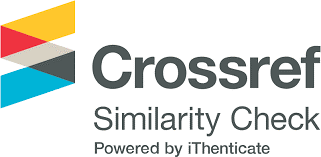Optimized Design Methodology and Maximum Efficiency Tracking Algorithm for Static IPT Chargers in Electric Vehicles
DOI:
https://doi.org/10.18618/REP.2005.2.023027Keywords:
Electric Vehicle, Inductive Power Transfer (IPT), Optimization Design, Particle Swarm Optimization (PSO), Wireless Charger, Wireless Power Transfer (WPT)Abstract
In recent years, technologies related to the electrification of transportation have attracted significant attention. Among these, wireless charging stands out, even facing numerous challenges concerning design and parameter optimization. Consequently, this article introduces a novel design methodology to improve the performance of inductive power transfer (IPT) systems for wireless charging applications in electric vehicles. The methodology considers operational limits of switches and passive components. By using a combination of Newton-Raphson and Particle Swarm Optimization (PSO) algorithms, the proposed approach efficiently determines both electrical and physical parameters of converters and coils to achieve maximum efficiency at a chosen operational point. Furthermore, a Maximum Efficiency Point Tracking (MEPT) algorithm is employed for optimal system operation. The proposed methodology is validated through experimental analysis using a 3.6 kW setup. Results demonstrate a power transfer efficiency around 89.4 %, while ensuring that current and voltage levels remain within safe operating areas for the components.
Downloads
References
IEA, World Energy Outlook 2021, international energy agency, https://www.iea.org/reports/world-energy-outlook-2021, 2021.
ABVE, Eletrificados batem todas as previsoes em 2021 ˜ ,ASSOCIACAO BRASILEIRA DE VEICULOS ELETRICOS,https://www.abve.org.br/eletrificados-batem-todas-as-previsoes-em-2021/, acesso 05/2022, 2022.
H. H. Wu, A. Gilchrist, K. D. Sealy, D. Bronson, “A High Efficiency 5 kW Inductive Charger for EVs Using Dual Side Control”, IEEE Transactions on Industrial Informatics, vol. 8, no. 3, pp. 585–595, 2012, doi:https://doi.org/10.1109/TII.2012.2192283. DOI: https://doi.org/10.1109/TII.2012.2192283
D. J. Thrimawithana, U. K. Madawala, “A primary side controller for inductive power transfer systems”, in 2010 IEEE International Conference on Industrial Technology, pp. 661–666, 2010, doi:https://doi.org/10.1109/ICIT.2010.5472724. DOI: https://doi.org/10.1109/ICIT.2010.5472724
F. Grazian, W. Shi, T. B. Soeiro, J. Dong, P. Bauer, “Electric Vehicle Charging Based on Inductive Power Transfer Employing Variable Compensation Capacitance for Optimum Load Matching”, in IECON 2020 The 46th Annual Conference of the IEEE Industrial Electronics Society, pp. 5262–5267, 2020, doi:https://doi.org/10.1109/IECON43393.2020.9254920. DOI: https://doi.org/10.1109/IECON43393.2020.9254920
S. Li, C. C. Mi, “Wireless Power Transfer for Electric Vehicle Applications”, IEEE Journal of Emerging and Selected Topics in Power Electronics, vol. 3, no. 1, pp. 4–17, 2015, doi:https://doi.org/10.1109/JESTPE.2014.2319453. DOI: https://doi.org/10.1109/JESTPE.2014.2319453
X. Dai, X. Li, Y. Li, A. P. Hu, “Maximum Efficiency Tracking for Wireless Power Transfer Systems With Dynamic Coupling Coefficient Estimation”, IEEE Transactions on Power Electronics, vol. 33, no. 6, pp. 5005–5015, 2018, doi:https://doi.org/10.1109/TPEL.2017.2729083. DOI: https://doi.org/10.1109/TPEL.2017.2729083
A. Mahesh, B. Chokkalingam, L. Mihet-Popa, “Inductive Wireless Power Transfer Charging for Electric Vehicles–A Review”, IEEE Access, vol. 9, pp. 137667–137713, 2021, doi:https://doi.org/10.1109/ACCESS.2021.3116678. DOI: https://doi.org/10.1109/ACCESS.2021.3116678
“SAE J2954: Wireless Power Transfer for Light-Duty Plug-In/Electric Vehicles and Alignment Methodology”, , October 2020.
X. Mou, O. Groling, A. Gallant, H. Sun, “Energy Efficient and Adaptive Design for Wireless Power Transfer in Electric Vehicles”, in 2016 IEEE 83rd Vehicular Technology Conference (VTC Spring), pp. 1–5, 2016, doi:https://doi.org/10.1109/VTCSpring.2016.7504220. DOI: https://doi.org/10.1109/VTCSpring.2016.7504220
A. A. S. Mohamed, S. An, O. Mohammed, “Coil Design Optimization of Power Pad in IPT System for Electric Vehicle Applications”, IEEE Transactions on Magnetics, vol. 54, no. 4, pp. 1–5, 2018, doi:https://doi.org/10.1109/TMAG.2017.2784381. DOI: https://doi.org/10.1109/TMAG.2017.2784381
K. Aditya, V. K. Sood, “Design of 3.3 kW wireless battery charger for electric vehicle application considering bifurcation”, in 2017 IEEE Electrical Power and Energy Conference (EPEC), pp. 1–6, 2017, doi:https://doi.org/10.1109/EPEC.2017.8286140. DOI: https://doi.org/10.1109/EPEC.2017.8286140
Z. Huang, T. Guan, Z. Wang, J. Wei, S. Wang, M. Liu, D. Sun, X. Zeng, “Maximum efficiency tracking design of wireless power transmission system based on machine learning”, Energy Reports, vol. 8, pp. 447–455, 2022, doi:https://doi.org/10.1016/j.egyr.2022.10.139 DOI: https://doi.org/10.1016/j.egyr.2022.10.139
H. Li, J. Li, K. Wang, W. Chen, X. Yang, “A Maximum Efficiency Point Tracking Control Scheme for Wireless Power Transfer Systems Using Magnetic Resonant Coupling”, IEEE Transactions on Power Electronics, vol. 30, no. 7, pp. 3998–4008, 2015, doi:https://doi.org/10.1109/TPEL.2014.2349534. DOI: https://doi.org/10.1109/TPEL.2014.2349534
W. X. Zhong, S. Y. R. Hui, “Maximum Energy Efficiency Tracking for Wireless Power Transfer Systems”, IEEE Transactions on Power Electronics, vol. 30, no. 7, pp. 4025–4034, 2015, doi:https://doi.org/10.1109/TPEL.2014.2351496. DOI: https://doi.org/10.1109/TPEL.2014.2351496
T. Duerbaum, “First harmonic approximation including design constraints”, in INTELEC - Twentieth International Telecommunications Energy Conference (Cat. No.98CH36263), pp. 321–328, 1998, doi:https://doi.org/10.1109/INTLEC.1998.793519. DOI: https://doi.org/10.1109/INTLEC.1998.793519
K. Aditya, S. S. Williamson, “Comparative study on primary side control strategies for series-series compensated inductive power transfer system”, in 2016 IEEE 25th International Symposium on Industrial Electronics (ISIE), pp. 811–816, 2016, doi:https://doi.org/10.1109/ISIE.2016.7744994. DOI: https://doi.org/10.1109/ISIE.2016.7744994
I. Barbi, Conversores CC-CC Basicos N ´ ao-Isolados ˜ , Edic¸ao dos Autores, Florianopolis, Santa Catarina, 2006.
A. K. Rathore, V. R. Vakacharla, “A Simple Technique for Fundamental Harmonic Approximation Analysis in Parallel and Series–Parallel Resonant Converters”, IEEE Transactions on Industrial Electronics, vol. 67, no. 11, pp. 9963–9968, 2020, doi:https://doi.org/10.1109/TIE.2019.2952820. DOI: https://doi.org/10.1109/TIE.2019.2952820
W. Zhang, C. C. Mi, “Compensation Topologies of HighPower Wireless Power Transfer Systems”, IEEE Transactions on Vehicular Technology, vol. 65, no. 6, pp. 4768–4778, 2016, doi:https://doi.org/10.1109/TVT.2015.2454292. DOI: https://doi.org/10.1109/TVT.2015.2454292
M. Zamani, M. Nagrial, J. Rizk, A. Hellany, “A review of inductive power transfer for electric vehicles”, in 2019 International Conference on Electrical Engineering Research Practice (ICEERP), pp. 1–5, 2019. DOI: https://doi.org/10.1109/ICEERP49088.2019.8956971
A. Alphones, P. Jayathurathnage, “Review on wireless power transfer technology (invited paper)”, in 2017 IEEE Asia Pacific Microwave Conference (APMC), pp. 326–329, 2017. DOI: https://doi.org/10.1109/APMC.2017.8251445
C. Nataraj, S. Khan, M. Habaebi, A. Muthalif, “Analysis of mutual inductance and coupling factor of inductively coupled coils for Wireless electricity”, ARPN Journal of Engineering and Applied Sciences, vol. 12, pp. 4007–4012, 07 2017.
A. Iyer, C. Bharatiraja, I. Vaghasia, V. Rajesh, “Design Optimisation for an Efficient Wireless Power Transfer System for Electric Vehicles”, Energy Procedia, vol. 117, pp. 1015–1023, 06 2017. DOI: https://doi.org/10.1016/j.egypro.2017.05.223
K. Aditya, V. K. Sood, S. Williamson, “Magnetic Characterization of Unsymmetrical Coil Pairs Using Archimedean Spirals for Wider Misalignment Tolerance in IPT Systems”, IEEE Transactions on Transportation Electrification, vol. PP, no. 99, pp. 1–1, 2019, doi:https://doi.org/10.1109/TTE.2019.2943321.
P. G. Pascoal, “Projeto do acoplamento indutivo de um sistema de transferencia de energia sem fio para a recarga de ve ˆ ´ıculos eletricos”, Trabalho de Conclusao de Curso (Graduacao) — Universidade Federal de Santa Maria, Santa Maria, Brasil, Mar. 2023, URL: http://repositorio.ufsm.br/handle/1/28493.
“IEC 60317-2: Specifications for particular types of winding wires - Part 2: Solderable polyurethane enamelled round copper wire, class 155”, Edition 6.0, 2021.
S. of Automotive Engineers (SAE), “Wireless Power Transfer for Light-Duty Plug-in Electric Vehicles and Alignment Methodology SAEJ2954”, SAE, 2010.
K. Aditya, V. K. Sood, “Design of 3.3 kW wireless battery charger for electric vehicle application considering bifurcation”, in 2017 IEEE Electrical Power and Energy Conference (EPEC), pp. 1–6, 2017, doi:https://doi.org/10.1109/EPEC.2017.8286140. DOI: https://doi.org/10.1109/EPEC.2017.8286140
O. Stielau, G. Covic, “Design of loosely coupled inductive power transfer systems”, in PowerCon 2000. 2000 International Conference on Power System Technology. Proceedings (Cat. No.00EX409), vol. 1, pp. 85–90 vol.1, 2000, doi:https://doi.org/10.1109/ICPST.2000.900036. DOI: https://doi.org/10.1109/ICPST.2000.900036
J. Kennedy, R. Eberhart, “Particle swarm optimization”, in Proceedings of ICNN’95 - International Conference on Neural Networks, vol. 4, pp. 1942–1948 vol.4, 1995, doi:10.1109/ICNN.1995.488968. DOI: https://doi.org/10.1109/ICNN.1995.488968
Downloads
Published
How to Cite
Issue
Section
License
Copyright (c) 2024 Leonardo A. Brum Viera, Pedro Pascoal, Cassiano Rech

This work is licensed under a Creative Commons Attribution 4.0 International License.















